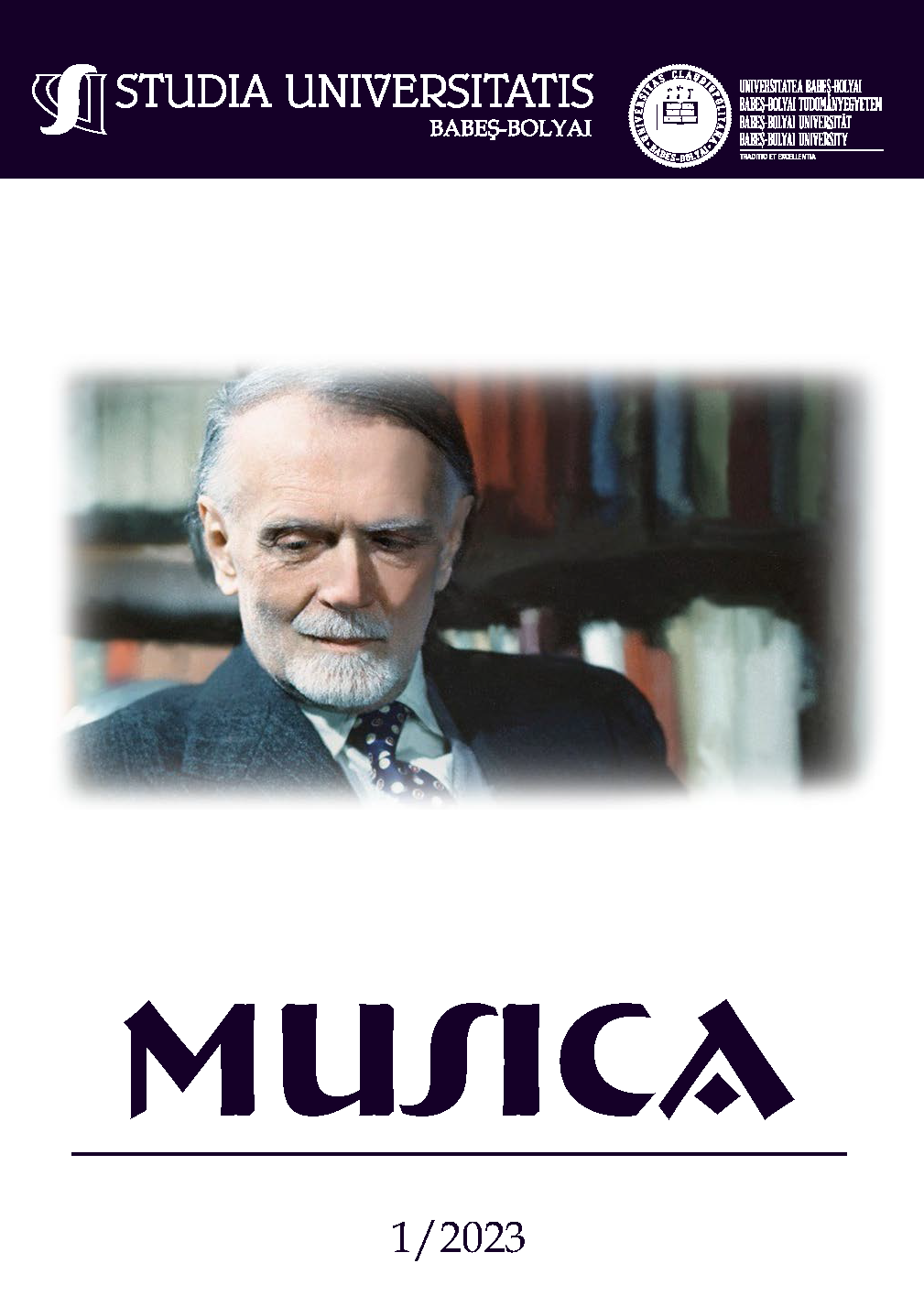THE KODÁLY CONCEPT WITHIN HUNGARIAN MUSIC EDUCATION IN TRANSYLVANIA
DOI:
https://doi.org/10.24193/subbmusica.2023.1.10Keywords:
let music be for everyone, folk music-based vocal music education, folk music research, textbooks, song anthologies, curriculaAbstract
The present study focuses on the native Hungarian music education in Transylvania, tracing the principles and practical elements of the Kodály concept from kindergarten to higher education. It highlights the work of Transylvanian folk music researchers, composers and teachers who helped the Kodály concept to take root in Transylvanian Hungarian music culture through their compositions, theoretical writings, or practical activities. Evidence of this can be found in theoretical writings, compositions, curricula, textbooks, and song anthologies.
References
Benkő, András, János Jagamas (1913-1997), In: Művelődés, Volume LI, No. 2, Cluj-Napoca, 1998, 14-15.
Jagamas, János, Miért nem népdal? (Why not folk songs?), In: Művelődés, Vol. XXXIII/5, Cluj-Napoca, 1980, 30-33.
Kodály, Zoltán, Visszatekintés (Retrospective), Volume I, Zeneműkiadó, Budapest, 1974.
Péter, Éva, János Jagamas' Folk Song Arrangements, In: Studia Universitatis Babeş-Bolyai Musica, No.: LXV-2, 2020, 307-320.
Szabó, Csaba, Zene és szolgálat (Music and Service), Kriterion, Bucharest, 1980.
***, Tavaszi szél vizet áraszt (The Spring Wind Gives Way to Water), 230 Hungarian folk songs. Ed. by Almási, István, Kriterion, Bucharest, 1982.
***, Üvegszilánkok között – Szabó Csaba emlékkönyv (Between Fragments of glass - In memoriam Csaba Szabó), Ed. by Ittzés Mihály, Szabó Péter, Cellissimo, Budapest, 2013.
Downloads
Published
How to Cite
Issue
Section
License
Copyright (c) 2023 Studia Universitatis Babeș-Bolyai Musica

This work is licensed under a Creative Commons Attribution-NonCommercial-NoDerivatives 4.0 International License.






